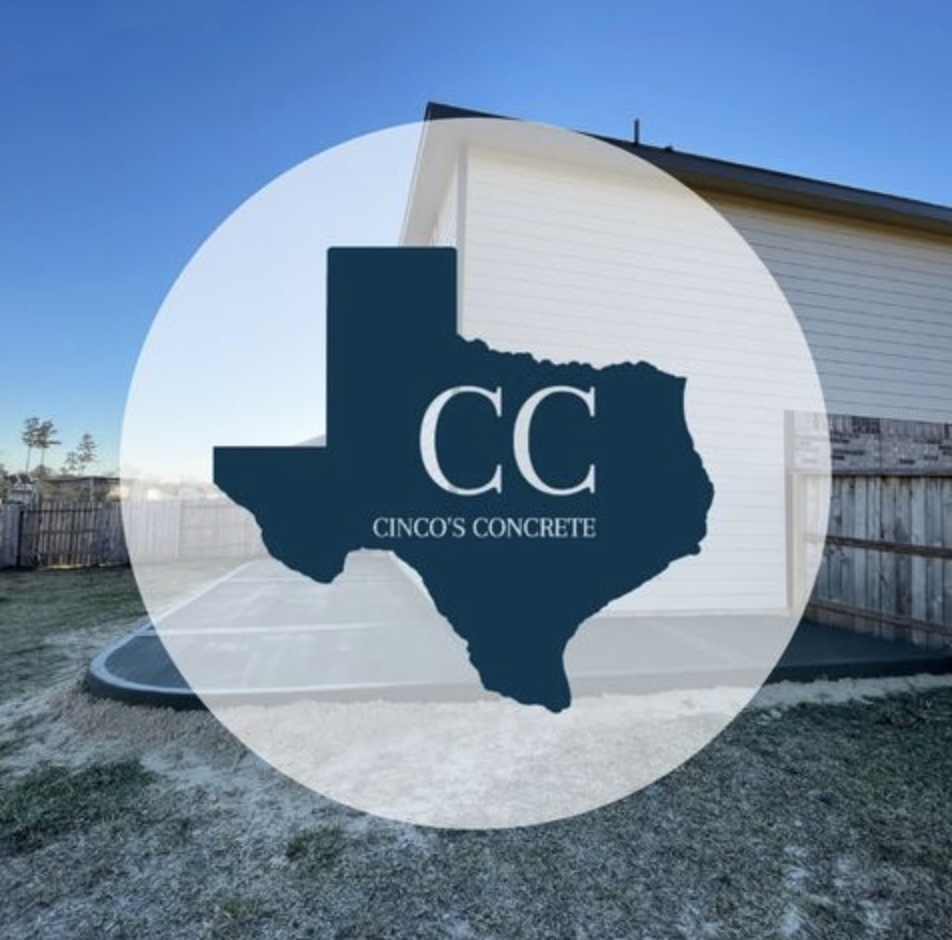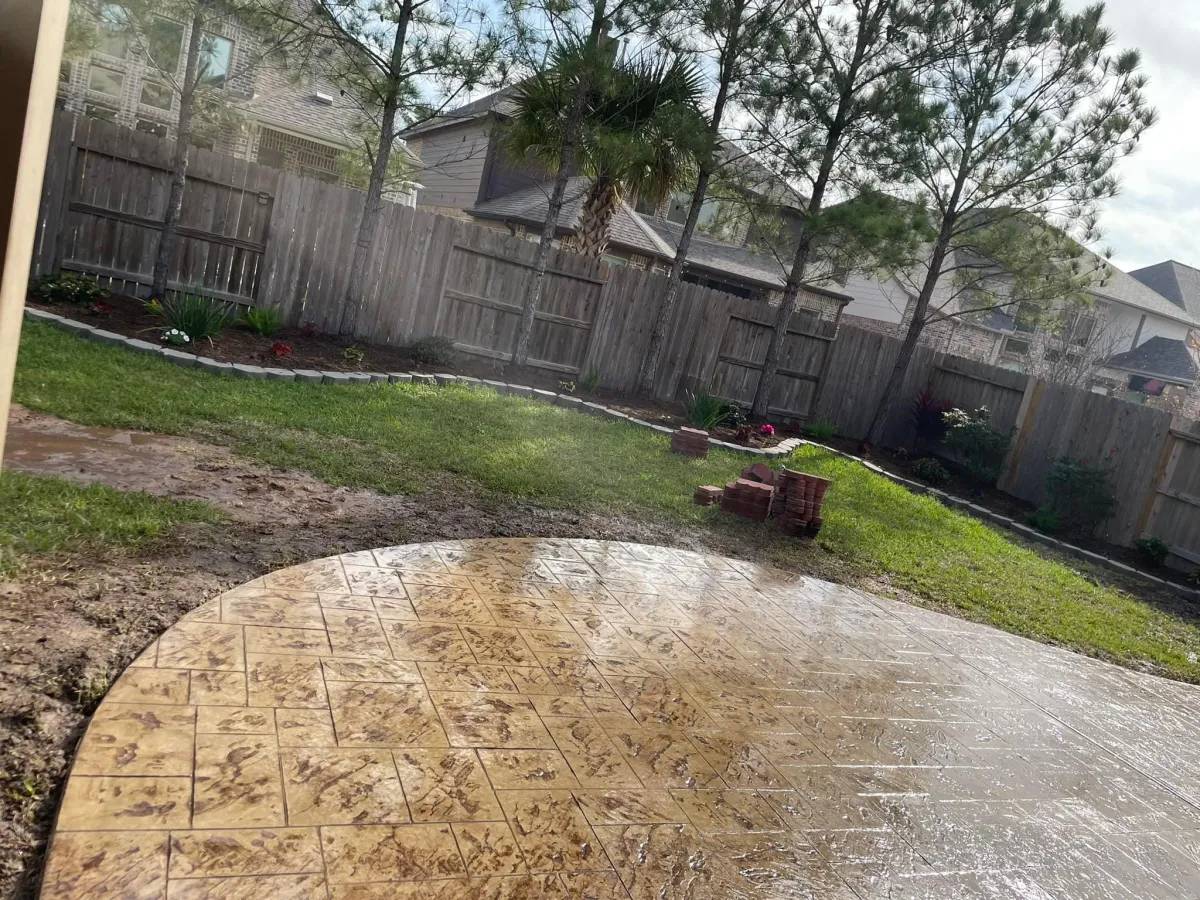
How much is a 30x30 concrete slab?
How Much is a 30x30 Concrete Slab?
A 30x30 concrete slab covers 900 square feet. The average cost for such a slab typically ranges from $4.50 to $18.00+ per square foot. This broad range results in a total project cost of approximately $4,050 to $16,200 or more.
For a basic, standard 4-inch thick concrete slab with a broom finish, expect to pay on the lower end of this spectrum. This baseline cost usually covers essential materials, site preparation, and labor. It's the most economical option for a functional slab.
However, adding features like increased thickness, higher strength concrete, or decorative finishes will push the price towards the mid-to-high end. Complex site conditions or accessibility issues can also significantly raise the total cost.
The final price will be determined by specific project requirements. It also depends on the choices you make regarding materials and aesthetics. Obtaining detailed quotes from local concrete patio contractors is crucial for an accurate estimate.
Understanding the Baseline Cost for a 30x30 Concrete Slab
To establish a baseline cost, we focus on the most common and fundamental components of a large concrete slab. This provides a starting point for budgeting. A 30x30 slab is a significant pour, impacting material and labor logistics.
Slab Size Calculation
A 30x30 foot area equals 900 square feet (30 ft * 30 ft = 900 sq ft). This is a substantial footprint. It allows for ample space for various outdoor uses.
Its large size means material and labor costs will be considerable. Planning is crucial for efficient execution.
Concrete Volume Required
The thickness of the slab directly determines the volume of concrete needed. Concrete is measured in cubic yards.
For a 4-inch thick slab (common for patios, light sheds): Approximately 11.11 cubic yards.
For a 5-inch thick slab (for heavier patios, pool decks, light vehicle traffic): Approximately 13.89 cubic yards.
For a 6-inch thick slab (for garage foundations, driveways, heavy equipment): Approximately 16.67 cubic yards.
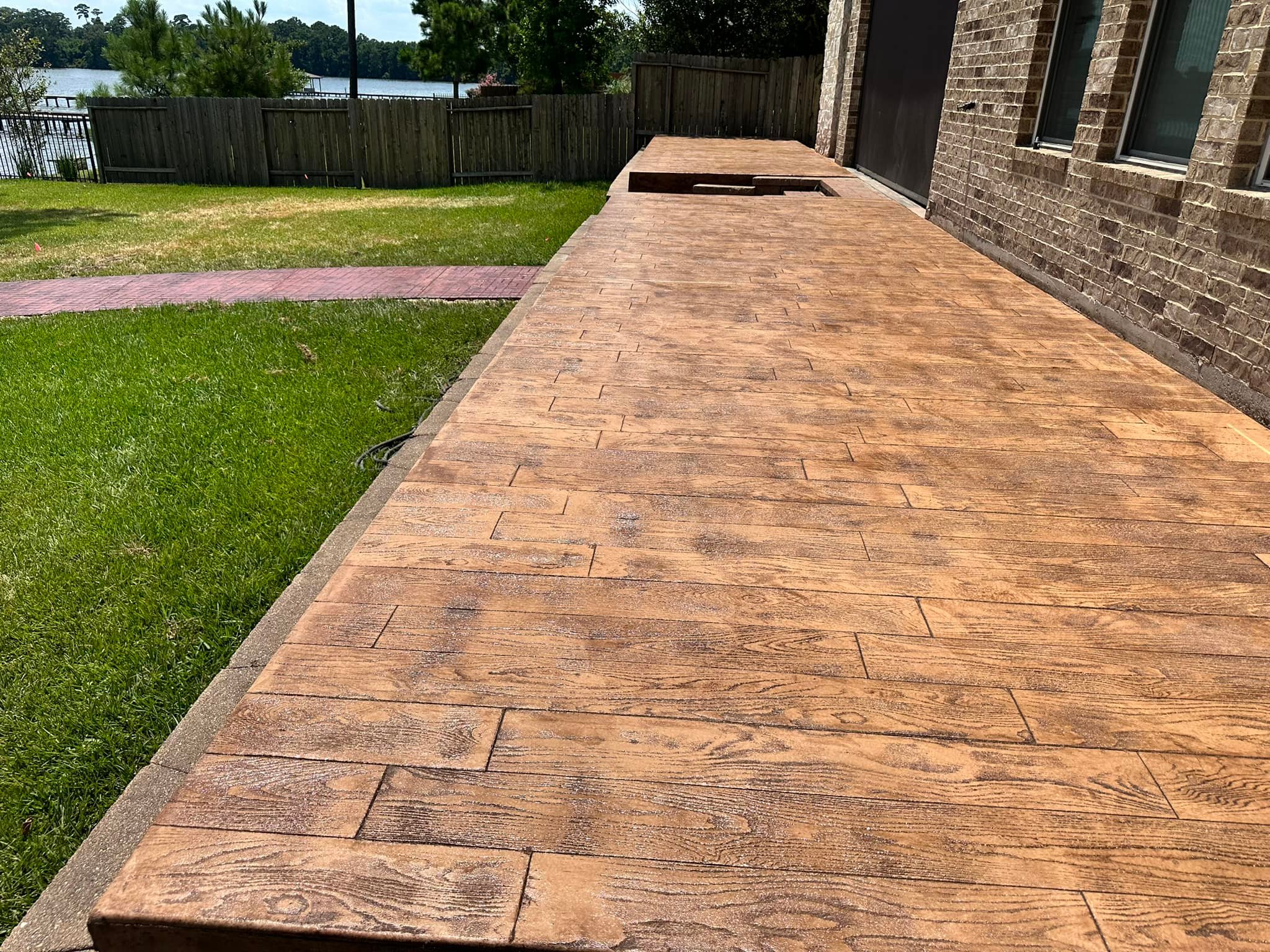
A 30x30 slab requires a large volume of concrete. This necessitates precise ordering and efficient delivery. The sheer volume impacts both material and pouring costs.
Typical Per-Square-Foot Range
For a basic 4-inch, broom-finished 30x30 concrete slab, the cost per square foot in Houston typically ranges from $4.50 to $8.00. This covers the essential elements. It includes standard excavation, sub-base, and the concrete pour itself.
This baseline price assumes straightforward site access and no major complications. It also doesn't include any decorative elements.
Total Baseline Cost
Based on the per-square-foot range, the total baseline cost for a 4-inch, 30x30 concrete slab with a standard finish would be approximately $4,050 to $7,200. This figure represents the cost of a functional, durable slab. It is without any aesthetic upgrades.
This range serves as a vital budgeting starting point. Any deviations from these basic specifications will increase the total price.
Primary Cost Drivers for a 30x30 Concrete Slab
The final price of a 30x30 concrete slab is influenced by a multitude of factors. Each element contributes to the overall material, labor, and equipment expenses. Understanding these drivers is key to predicting your project's total cost.
1. Slab Thickness and Concrete Mix (PSI)
As discussed, thickness directly impacts concrete volume.
4-inch thickness: Suitable for typical patios, walkways, and light-duty shed foundations. It’s the most economical.
5-inch or 6-inch thickness: Essential for heavier loads. This includes vehicles (driveways, parking), large outdoor kitchens, or substantial storage structures. The increased material volume significantly raises cost.
Concrete strength (PSI) also affects price.
2,500 - 3,000 PSI: Common for general residential applications. It's the most cost-effective.
3,500 - 4,000 PSI: Offers superior strength and durability. Recommended for driveways or high-traffic areas. It costs more per cubic yard.
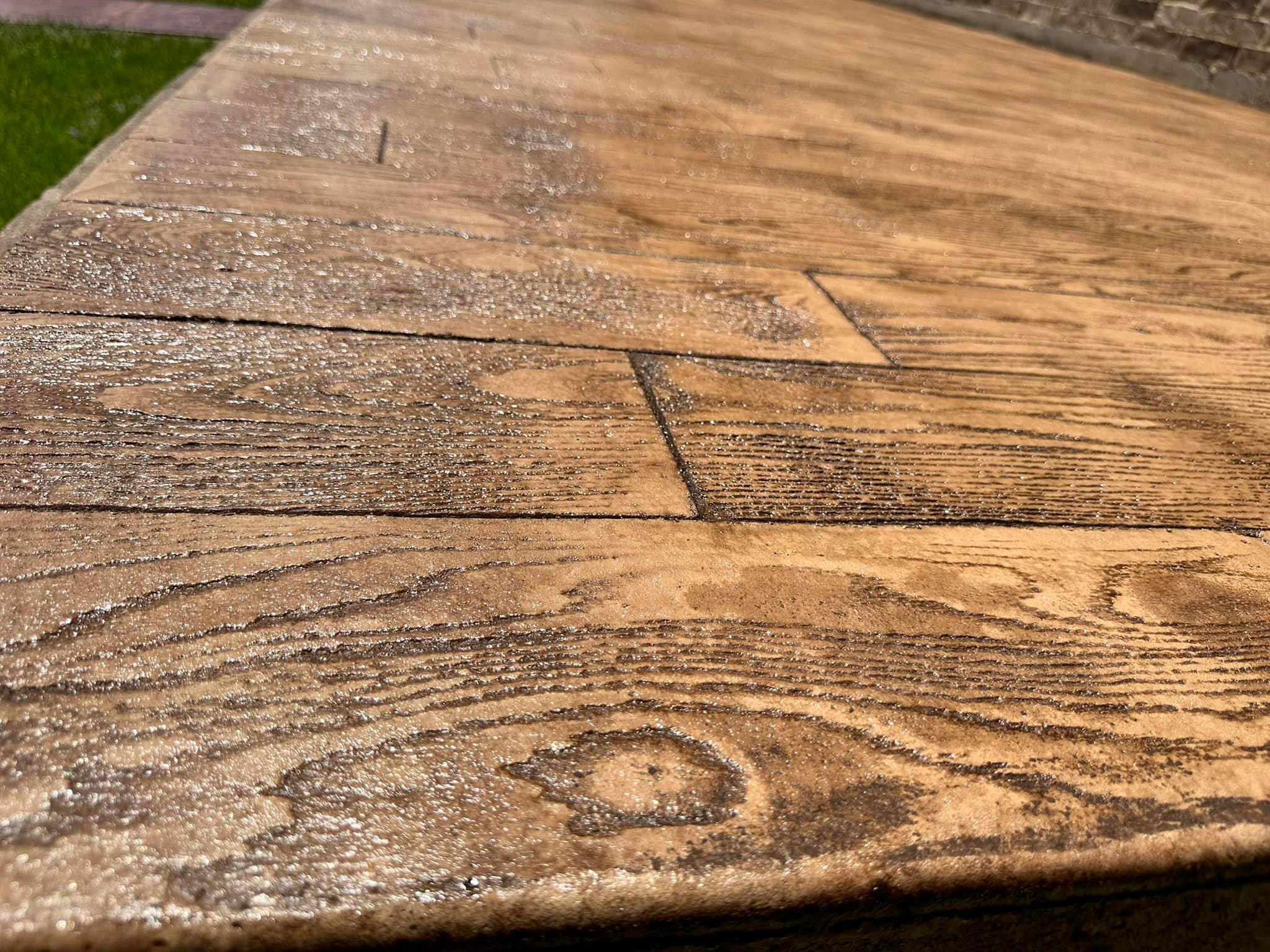
Admixtures can be added to the concrete mix.
Air-entrainment: Enhances resistance to freeze-thaw cycles. Less critical in Houston, but still improves durability.
Water reducers: Improve concrete workability and strength.
Fibers: Synthetic fibers help reduce plastic shrinkage cracking, particularly important for large slabs like 30x30. Each admixture adds a small cost.
2. Site Preparation and Excavation
This is often one of the most variable and significant cost factors, especially for a large 900 sq ft slab.
Clearing and Debris Removal: If the area has dense vegetation, large rocks, old foundations, or other obstacles, extensive clearing is needed. This involves labor, machinery, and disposal fees.
Excavation Depth: Digging the precise depth for the slab and sub-base is critical. For a 30x30 area, this means moving a substantial amount of earth. Hard soil, rocky ground, or Houston's expansive clay can increase labor and equipment costs.
Demolition: Removing an existing concrete patio, asphalt driveway, or large shed foundation adds considerable expense. Demolition and hauling away debris can cost $2 to $6 per square foot, depending on thickness and material.
Grading and Drainage: Proper grading ensures water flows away from the slab and your home's foundation. For a 900 sq ft slab, complex grading or the installation of drainage systems (French drains, trench drains) can be a significant addition. This is particularly important in Houston due to heavy rainfall.
Inadequate site preparation can lead to costly problems later. Investing here prevents future issues like settling, cracking, or water damage.
3. Sub-Base Materials and Compaction
A properly installed and compacted sub-base is absolutely essential for the longevity of a 30x30 slab. It provides uniform support and helps distribute the load.
Material: Typically 4-6 inches of gravel or crushed stone. For 900 sq ft, this is a large volume of material.
Delivery and Spreading: Material costs vary by region. Delivery for such a large quantity will also be a factor. Spreading requires labor or machinery.
Compaction: This layer must be thoroughly compacted using heavy equipment like a vibratory plate compactor or roller. Proper compaction prevents future settling and improves slab stability.
Skipping or skimping on the sub-base is a common mistake that leads to premature slab failure. It's a non-negotiable expense for a durable slab.
4. Reinforcement
Reinforcement significantly enhances a concrete slab's strength and crack resistance. For a 30x30 slab, it's highly recommended, if not mandatory.
Wire Mesh: The most common and economical. It helps control shrinkage cracking.
Rebar (Reinforcing Bar): Provides superior structural integrity. Often required for garage slabs, driveways, or areas with heavy loads. For a 30x30 slab, a grid of #3 or #4 rebar on 18-24 inch centers is typical. Rebar is more expensive to purchase and requires more labor to cut, tie, and properly support within the slab.
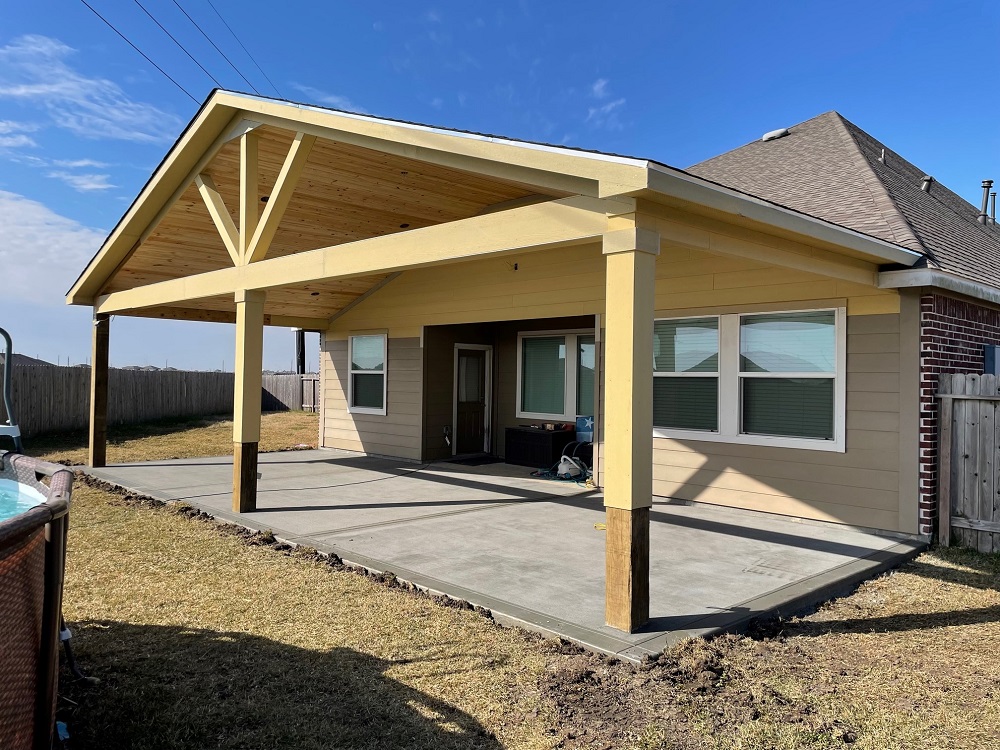
Fibers: Can be added to the concrete mix to reduce plastic shrinkage cracking.
Proper placement of reinforcement (using chairs to keep it in the middle of the slab) is as important as the material itself.
5. Formwork Materials and Labor
Formwork creates the precise perimeter and height of your concrete slab. For a 30x30 slab, this means a perimeter of 120 linear feet.
Materials: Typically lumber (2x4s, 2x6s, 2x8s depending on slab thickness) and stakes. For a large slab, considerable lumber is needed.
Labor: Setting up, squaring, leveling, and securely bracing the forms is labor-intensive. Accuracy here is crucial for a straight and level slab.
Complexity: While a 30x30 is usually a simple square, any deviations (e.g., small curves, cut-outs for posts) would increase formwork complexity and cost.
6. Accessibility and Concrete Delivery
The logistics of getting concrete to a 900 sq ft site are a major cost factor.
Distance from Batch Plant: Longer distances mean higher fuel surcharges and delivery fees.
Site Access for Trucks: The ready-mix truck needs clear, stable access. If the truck cannot get close to the pour area, alternative methods are required.
Concrete Pump: For a 30x30 slab, especially if it's thick (5-6 inches), a concrete pump is almost always necessary for efficient and timely placement.
Line Pumps: Smaller, for less dense mixes.
Boom Pumps: Larger, with an arm for reaching over obstacles.
Cost: Pump rental (with operator) can add $600 to $1,500+ per day or pour. This is a significant added expense but ensures a smooth pour for large slabs.
For a large slab, attempting to wheelbarrow concrete is extremely labor-intensive, time-consuming, and prone to poor results. A pump is often a wise investment despite the cost.
7. Labor Rates and Crew Size
Labor is typically the largest component of concrete slab installation, often accounting for 50-70% of the total cost.
Crew Size: A 30x30 concrete slab requires a larger, experienced crew (typically 4-6 people or more) to efficiently manage the large volume of concrete before it sets.
Skill Level: Skilled finishers are essential for achieving a professional, durable surface.
Local Rates: Labor costs vary by region. In Houston, labor rates are competitive due to the active construction market.
The coordination and speed required for a 90x90 concrete pour demand professional expertise. This ensures the job is done correctly in one continuous effort.
Finishing Options and Their Cost Impact
The chosen finish for your 30x30 concrete slab can drastically alter its final appearance and, consequently, its cost. Basic finishes are functional and economical, while decorative options require specialized techniques and materials.
1. Basic Finishes (Most Affordable)
These finishes are included in the baseline cost per square foot and are highly durable.
Broom Finish: Achieved by dragging a broom across the wet concrete. It creates a textured, non-slip surface, which is excellent for safety, particularly in wet conditions. It's the simplest and most cost-effective finish.
Smooth Trowel Finish: Achieved by hand or power troweling the surface to create a dense, smooth finish. Often used for garage floors. It requires more skill and labor than a broom finish but remains relatively inexpensive. However, it can be slippery when wet, making it less ideal for outdoor patios.

For a functional, budget-friendly 30x30 slab, these finishes are the most logical choice.
2. Decorative Finishes (Mid-Range to High-End)
These options transform a plain concrete slab into a visually appealing feature, but they significantly increase the cost due to specialized labor and materials.
Colored Concrete:
Integral Color: Pigment is mixed into the concrete during batching. Provides consistent color throughout the slab. Adds $1-$3 per square foot. For a 900 sq ft slab, this is a notable increase.
Dry-Shake Color Hardener: Powder applied to the wet surface and troweled in. Offers vibrant, durable colors. Adds $0.50-$2 per square foot.
Stains (Acid or Water-Based): Applied after the concrete cures. Create translucent, mottled effects (acid) or more uniform colors (water-based). Adds $2-$8 per square foot, depending on complexity and multiple applications.
Stamped Concrete: This is very popular for large patios. Molds are pressed into the wet concrete to replicate textures like natural stone, brick, or wood.
Complexity: Intricate patterns, multiple colors, and realistic textures increase cost. For a 30x30 area, a consistent, high-quality stamp requires experienced applicators.
Cost: Stamped concrete generally adds $5-$15 per square foot to the base price. Overall, a stamped 30x30 slab can range from $10-$25+ per square foot, making it a premium choice. The total cost could be $9,000 to $22,500+.
Exposed Aggregate: This finish showcases the natural beauty of the stones (aggregates) within the concrete mix.
Process: The surface cement paste is washed or removed while the concrete is still somewhat fresh, exposing the aggregates.
Cost: Adds $3-$8 per square foot to the base price. It creates a highly textured, slip-resistant, and aesthetically unique surface.
Salt Finish: Rock salt crystals are sprinkled and pressed into the wet concrete. After curing, they are washed away, leaving small indentations. It's a subtle texture. It adds $1-$2 per square foot.
Scored or Saw-Cut Patterns: After curing, lines are saw-cut into the surface to create patterns (e.g., large squares, grids, custom designs). This can mimic large tile pavers. It adds $1-$3 per square foot, depending on complexity. Often combined with coloring or staining.
Polished Concrete: Primarily for interior, covered spaces. The concrete is ground and polished to a high sheen. Very durable and low maintenance, but costly. It adds $5-$15 per square foot for basic polishing.
The choice of finish is a major decision. It significantly impacts the total budget for your 30x30 concrete slab. Be specific about your desired finish when getting quotes.
Additional Features and Enhancements
Beyond the basic slab and finish, various features can be integrated. These enhance functionality and aesthetics but will add to the overall cost of your 30x30 concrete slab.
1. Integrated Steps, Ramps, or Multi-Level Designs
For a large slab, access points often include steps or ramps. If the slab is part of a multi-level outdoor area, additional complexity arises.
Cost Impact: Each concrete step or linear foot of ramp requires additional formwork, concrete, and skilled labor. A typical concrete step can cost $200-$500+. Multi-level designs involve more extensive excavation and complex formwork, significantly increasing the per-square-foot cost for the entire project.
2. Built-in Seating, Planters, or Kitchen Bases
Integrating custom concrete elements into the slab design creates a seamless look. This is popular for large patios used for entertaining.
Benefits: Permanent, durable features that define spaces.
Cost Impact: Requires specialized formwork, additional concrete volume, and intricate labor. Costs vary widely but can add hundreds to thousands of dollars depending on size and design.
3. Integrated Fire Pits or Fireplaces
Adding a concrete fire pit or a more elaborate fireplace creates a focal point. It also adds warmth and extends the usability of your large patio.
Complexity: These structures require specialized concrete work and often masonry or pre-fabricated inserts.
Cost Impact: A significant addition, ranging from $1,000 for a simple concrete fire pit to $5,000+ for a custom fireplace with a chimney.
4. Drainage Systems
For a 900 sq ft slab, proper drainage is absolutely critical to prevent water pooling. This is especially true in areas like Houston with heavy rainfall.
Trench Drains or Catch Basins: Linear trench drains or strategically placed catch basins collect surface water. They then route it away via pipes.
Cost Impact: Installation of these systems adds material cost for grates, piping, and excavation. Costs can range from a few hundred to over a thousand dollars, depending on the complexity of the system.
5. Lighting and Electrical Conduits
Planning for outdoor lighting or electrical outlets during the pour allows for concealed wiring. Conduits can be laid within the slab.
Benefits: Provides functional and ambient lighting for evening use. Powers outdoor appliances.
Cost Impact: The conduits themselves are relatively inexpensive. However, running electrical lines, installing fixtures, and hiring a licensed electrician add significantly to the total project budget.
These enhancements increase the functionality and appeal of your 30x30 slab. They must be factored into your initial budget.
The Role of Professional Concrete Patio Contractors
For a project as substantial as a 30x30 concrete slab, hiring professional concrete patio contractors is not just recommended, it's virtually essential. This scale of work is far beyond a typical DIY endeavor.
Why Professionals are Essential for a 30x30 Slab
Sheer Volume of Concrete: Pouring 11 to 17 cubic yards of concrete (depending on thickness) is an immense task. Concrete sets quickly. This requires rapid, coordinated effort.
Specialized Equipment: Professionals have access to and expertise with heavy machinery. This includes power screeds, large power trowels, laser levels, vibratory plate compactors, and often concrete pumps. Renting and operating these tools effectively is costly and requires skill.
Expertise and Experience: Concrete contractors understand critical factors like soil conditions, proper sub-base compaction, precise concrete mix designs, and intricate finishing techniques for large areas. They ensure a perfectly level, durable slab.
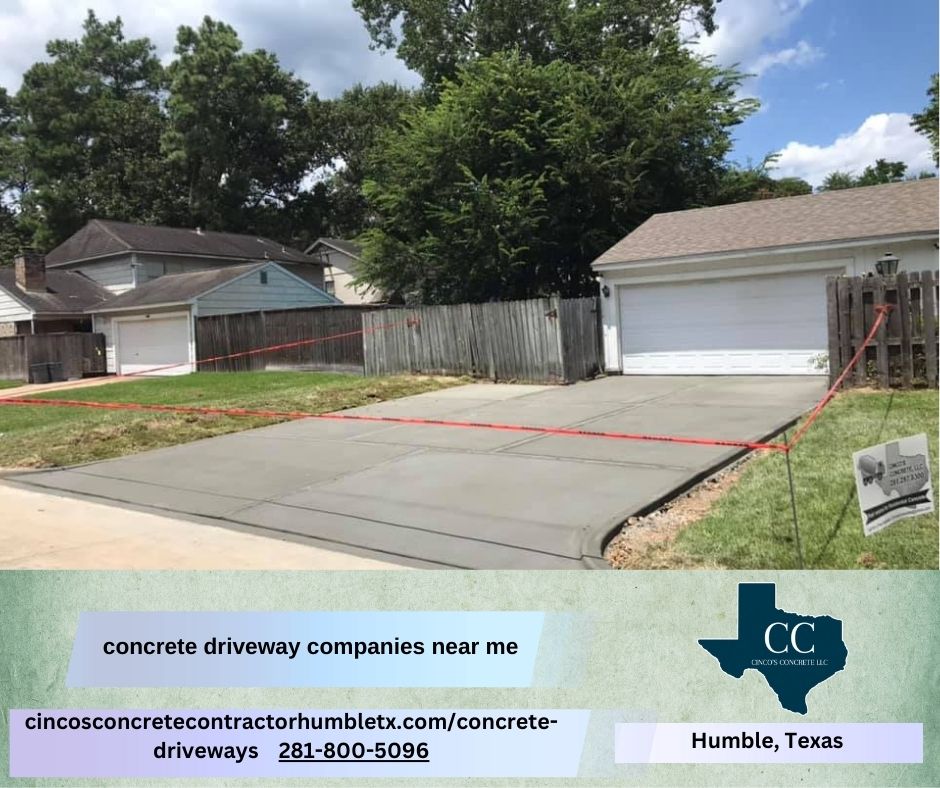
Efficiency and Speed: A professional crew can complete the pour and initial finishing efficiently. This prevents "cold joints" (where new concrete meets partially set concrete) and ensures a uniform, high-quality finish.
Quality Guarantee: Reputable concrete patio contractors provide warranties on their work. This offers peace of mind. It protects your significant investment against defects or premature failure.
Code Compliance and Permits: Professionals are familiar with local building codes, setbacks, and permit requirements for large slabs. They handle the necessary paperwork and inspections, ensuring your project is legal and safe.
Problem Solving: Unexpected issues, like unstable soil or sudden weather changes, can arise. Experienced contractors are equipped to handle these challenges. They can adapt to difficult site conditions without compromising quality.
Attempting a 30x30 concrete slab as a DIY project is extremely risky. It often leads to costly mistakes, an inferior product, and potential safety hazards.
What to Look for in Concrete Patio Contractors Near Me (Houston, TX)
When searching for "concrete patio contractors near me" for a large project like a 30x30 slab in Houston, consider these critical factors:
Licensing and Insurance: Verify that the contractor is properly licensed and carries comprehensive liability and worker's compensation insurance. This protects you from financial responsibility in case of accidents or damage.
Experience with Large Slabs: Ask specifically about their experience with projects of similar size and complexity. Request references for large concrete pours.
Portfolio: Review their portfolio of past concrete slab projects. Look for examples of the finishes and designs you are considering.
Reviews and Reputation: Check online reviews on platforms like Google, Yelp, or industry-specific sites. Look for consistent positive feedback regarding quality, communication, and professionalism.
Detailed, Itemized Quotes: Obtain at least three written, itemized quotes. Ensure they specify the concrete PSI, reinforcement type, sub-base details, finishing options, and any additional features. This allows for clear comparison.
Understanding of Local Conditions: Crucially, ensure they have experience with Houston's expansive clay soils and hot, humid climate. Ask about their methods for managing these challenges (e.g., specific sub-base techniques, curing methods).
Communication: Choose a contractor who communicates clearly, answers your questions, and is responsive throughout the process.
Contract: Ensure all project details, costs, payment schedules, and warranties are clearly outlined in a written contract before work begins.
For large concrete projects in Houston, Cincos Concrete LLC is a trusted local company. They possess the expertise and equipment necessary for substantial slab installations.
Long-Term Costs and Maintenance of a Concrete Slab
While the initial cost is significant, factoring in long-term maintenance provides a more accurate picture of the total investment for your 30x30 concrete slab. Concrete is durable but benefits from ongoing care.
1. Sealing
Applying a high-quality concrete sealer is vital for protecting your large slab. Sealers help repel water, resist stains, and protect against UV damage. This prevents spalling (surface flaking) and efflorescence.
Frequency: Sealers typically need reapplication every 2-5 years, depending on traffic, climate, and the type of sealer.
Cost: Material costs for sealer for 900 sq ft are reasonable. Professional sealing will involve labor charges. This is a small, recurring cost compared to the slab's initial investment.
2. Cleaning
Regular cleaning helps maintain the appearance of your 30x30 slab.
Routine: Sweeping debris and occasional washing with a hose and mild detergent are usually sufficient.
Deeper Cleaning: For tougher stains (oil, grease, rust) or accumulated grime, a pressure washer can be used cautiously.
Cost: Minimal, primarily involving your time and cleaning supplies.
Promptly cleaning spills prevents permanent staining, especially on unsealed or improperly sealed surfaces.
3. Crack Repair
Even with proper installation and control joints, minor cracks can occur over time due to ground movement, drying shrinkage, or extreme temperature fluctuations.
Minor Cracks: Small, non-structural cracks can be filled with a concrete crack filler or sealant. This is a relatively low-cost, DIY-friendly repair.

Major Cracks/Settling: Larger, structural cracks, significant spalling, or areas of settling may indicate underlying issues. These require professional assessment and potentially more costly repairs, such as mudjacking/slab jacking to re-level sections, or even partial replacement. Addressing cracks early prevents them from worsening.
4. Resurfacing or Overlay
If your large concrete slab is aging, stained, or has numerous minor imperfections but is still structurally sound, resurfacing or applying an overlay can refresh its appearance.
Process: A thin layer of new concrete or a polymer-modified cementitious coating is applied over the existing slab. Overlays can mimic decorative finishes.
Cost: Less expensive than a full slab replacement. Costs vary widely based on the chosen overlay and surface preparation needed, but can range from $3-$10+ per square foot. This is a significant, but infrequent, cost.
Compared to other large surface materials (e.g., asphalt driveways needing frequent resealing, large wooden decks needing regular staining/repair), a well-maintained concrete slab is relatively low maintenance. This contributes to its overall value.
Return on Investment and Property Value
Installing a 30x30 concrete slab is a significant investment. However, it can substantially increase your property's value and functionality. This often leads to a strong return on investment (ROI).
Enhanced Usability and Appeal
A large, well-installed concrete slab creates highly valuable outdoor living or functional space.
Versatility: It can serve as a massive patio for entertaining, a dedicated sports court, a robust foundation for a large garage or workshop, or an extended parking area.
Curb Appeal: A professionally finished slab, especially with decorative elements, significantly enhances the aesthetic appeal and overall curb appeal of your property.
This added utility and visual appeal are highly attractive to potential buyers. They are often looking for move-in ready or highly functional outdoor areas.
Durability and Longevity as a Selling Point
Concrete is renowned for its exceptional durability. A properly installed 30x30 slab can easily last 30 to 50 years or even longer with minimal maintenance.
Low Maintenance Feature: Buyers appreciate features that require minimal ongoing effort and cost. The relatively low maintenance of concrete is a strong selling point compared to other materials.
Long-Term Asset: The extreme longevity of a concrete slab provides a long-term asset. This reduces future homeowner worries about replacement.
This inherent durability makes the slab a highly valued feature for potential buyers.
Foundations for Future Projects
A large concrete slab can serve as a robust foundation for future home improvements.
Garage or Workshop: It provides a solid base for constructing a new garage, workshop, or large shed.
Outdoor Structures: Can support pergolas, gazebos, or extensive outdoor kitchens.
This potential for future expansion or development adds significant perceived value to the property.
Competitive Advantage
In a competitive real estate market, a high-quality, versatile concrete slab can give your home a distinct advantage. It signals a well-maintained and thoughtfully upgraded property. This can lead to a quicker sale and justify a higher asking price. The investment in such a substantial, durable feature is often recouped.
Getting Accurate Quotes for Your 30x30 Concrete Slab in Houston, TX
The best way to determine the precise cost for your 30x30 concrete slab is to obtain detailed quotes from multiple reputable concrete patio contractors in your area. For homeowners in Houston, Texas, providing specific details and asking the right questions is crucial.
What to Provide to Contractors
When requesting quotes, be as detailed as possible:
Exact Dimensions: Confirm it's 30x30 feet (900 sq ft).
Intended Use: Specify if it's for a patio, garage, driveway, basketball court, etc. This helps them recommend appropriate thickness and PSI.
Desired Thickness: State 4", 5", or 6" based on intended use.
Site Conditions: Describe the current area (grass, existing old concrete/asphalt, trees, significant slope). Mention any access issues for a large concrete truck or pump.
Desired Finish: Be very specific (broom, smooth, stamped pattern, color, stain, exposed aggregate). Provide images if possible.
Additional Features: List any integrated steps, drainage needs (trench drains), electrical conduits, or built-in elements.
Timeline: Indicate your preferred start and completion dates.
What to Look For in a Quote
Itemized Breakdown: A good quote will itemize costs for each component: excavation, sub-base material, concrete volume and PSI, reinforcement type, formwork, labor, specific finishing option, and demolition/disposal if applicable.
Inclusions/Exclusions: Clearly understand what's included (e.g., pump rental, permit fees) and what might be an extra charge.
Warranty: Ask about the warranty on their workmanship and materials.
Payment Schedule: Understand the deposit requirement and progress payment structure.
Permit Handling: Confirm if they will handle the necessary permits and inspections with the City of Houston or relevant county.

Be wary of quotes that are significantly lower than others. This might indicate shortcuts in materials, labor, or lack of proper insurance. Trust your instincts and prioritize clear communication and professionalism. For reliable service, considering Cincos Concrete LLC could be a good starting point for a quote.
Conclusion
A 30x30 concrete slab is a major home improvement project, with costs ranging from $4,050 for a basic, 4-inch slab with a broom finish to over $16,200 for thicker, more decorative, or complex installations. The per-square-foot cost typically falls between $4.50 and $18.00+, depending heavily on a multitude of factors.
Key cost drivers include slab thickness (and thus concrete volume), the chosen concrete mix strength (PSI), the extent of site preparation and excavation required, the type and depth of the sub-base, and the choice of reinforcement. Crucially, access to the site and the potential need for a concrete pump for such a large volume will significantly impact logistical costs. The final finishing option, from a simple broom finish to intricate stamping, is often the biggest aesthetic and financial differentiator.
For a project of this magnitude (900 sq ft), hiring professional concrete patio contractors is not merely advisable but essential. Their expertise, specialized equipment, and ability to manage a large concrete pour efficiently ensure a high-quality, durable, and long-lasting slab. In Houston, Texas, selecting contractors familiar with expansive clay soils and the local climate is paramount to prevent future issues. By obtaining detailed, itemized quotes and carefully evaluating the proposals, you can ensure a successful and valuable investment in your property.
